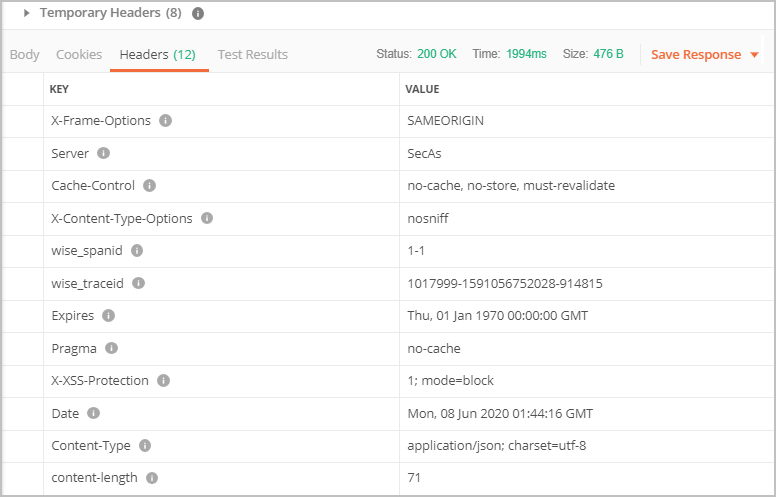Returned Values
Status Code
After sending a request, you will receive a response containing the status code, response header, and response body.
A status code, a group of digits ranging from 1xx to 5xx, indicates the status of a response. For more information, see Status Code.
If 204 is returned for calling the API used to create a customer, the request is successful.
Response Header
Similar to a request, a response also has a header, for example, Content-Type.
Figure 1 shows the response header for the API used to create a customer.
(Optional) Response Body
The body of a response is often returned in structured format (for example, JSON or XML) as specified in the Content-Type header field. The response body transfers content except the response header.
The following is part of the response body for the API used to create a customer:
1 2 3 4 5 6 7 8 |
HTTP/1.1 200 OK Content-Type: application/json;charset=UTF-8 Content-Length: length Date: response time { "domain_id": "08f25edee500d3e70f4ec007d082eb80", "domain_name": "testdomainnamexxx" } |
If an error occurs during API calling, an error code and a message will be displayed. The following shows an error response body.
1 2 3 4 |
{ "error_msg": "The name exists.cse://CBCCustomerRegService/rest/cbc/cbccustomerregservice/v1/customer/register[error_code]:CBC.7156[msg]:{\"error_code\":\"CBC.7156\",\"error_msg\":\"domainName exist.\"} ", "error_code": "CBC.99000038" } |
In the preceding information, error_code is an error code, and error_msg describes the error.
Feedback
Was this page helpful?
Provide feedbackThank you very much for your feedback. We will continue working to improve the documentation.







